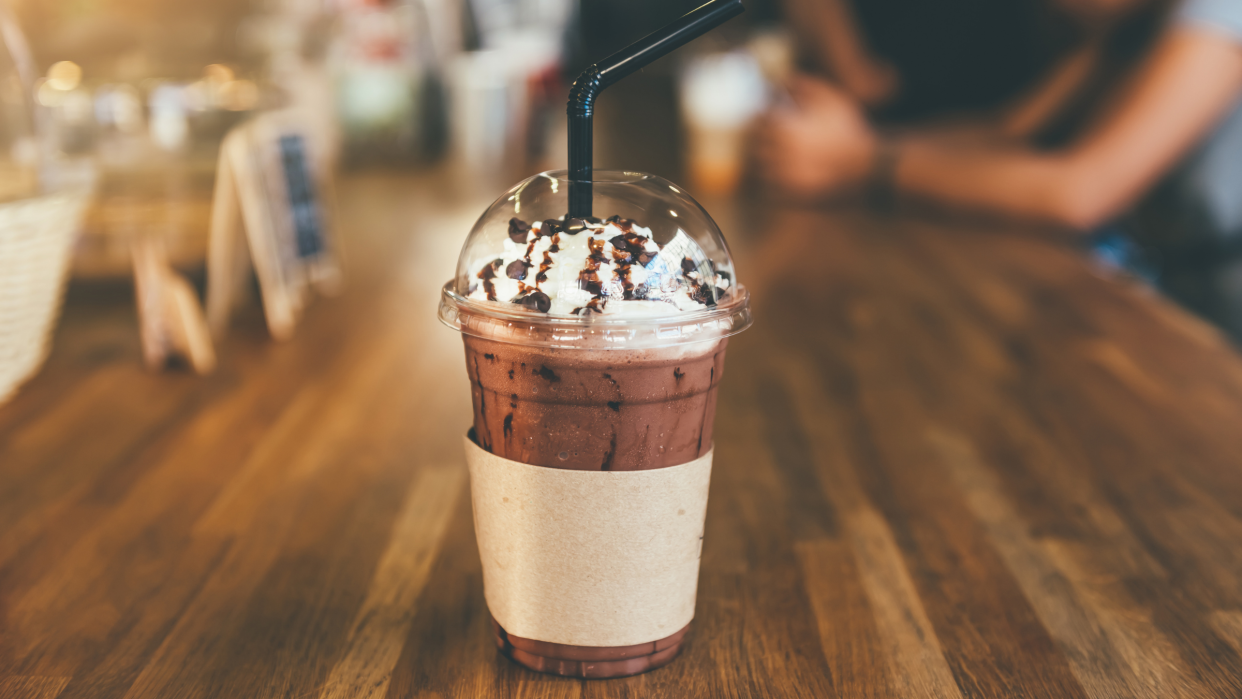5 Foods to Avoid If You’re Worried About Acne

This article originally appeared on Clean Eating
Feeling confident in your skin is important. While others may not notice if you have a blemish, it can affect your self-esteem. Acne of any kind can be all-consuming, leaving you thinking only about your appearance (and it can be painful, too). While there are many causes of pimples like bacteria, excess oil and dead skin, which can block the pores, your diet can play a bigger role than you might expect.
While food alone won't directly cause acne, what you eat does play a role in your skin’s health. It can also contribute to blemishes. If you're hoping to keep your skin clear, try limiting these five foods, which can trigger breakouts and cause inflammation within the skin.
1. Refined grains and sugar
It's no surprise that refined grains and sugars can trigger a lot of negative side effects for your health. These two ingredients can alter blood glucose, increase cravings and yes, even impact your skin. Both can promote acne, making you more breakout-prone.
So, what exactly are refined grains and sugar found in? You'll find refined grains in breads, crackers, cereals and pastas made with white flour. Refined sugar can be found in many types of desserts, like cakes, brownies and candies; it's also found in sugar-sweetened beverages and sodas. And many sweeteners, like syrup, honey, agave and cane sugar, also contain sugar.
Studies have shown higher intakes of carbohydrates from high-glycemic foods, like refined grains and sugars, are connected with the prevalence of acne. In fact, research suggests the more sugar people eat in foods like pastries and cakes, the higher the risk of pimples. Additionally, refined carbs spike blood sugar levels as they're rapidly absorbed in the body, which causes insulin levels to rise. That, in turn, increases hormones that promote sebum production, which contributes to a greater risk of acne.
To reduce breakouts, limit refined grains and sugars. Focus instead on high-fiber carbohydrates like whole grains, beans, legumes and vegetables, which won't spike your blood sugars. Our Crunchy Thai Black Rice Salad with Peanut Ginger Dressing is a great option for radiant skin.
2. Dairy
Dairy affects everyone's skin differently. Some people who eliminate dairy from their diets have claimed their skin cleared up. Others limit cow's milk and will continue to eat yogurt and cheese and be blemish-free. How dairy affects our skin health is complex; there are many different types of dairy, with various levels of carbohydrates, proteins, fat, and nutrients. That can all affect skin differently.
The American Academy of Dermatology states, "Cow's milk may increase acne due to some of the hormones in milk that cause inflammation inside the body. This inflammation can clog pores, resulting in acne. However, more research is needed." A meta-analysis review of over 78,500 children and young adults found the intake of dairy increased the risk of acne when compared to people who consumed no dairy at all. But many of the people self-reported their results, which can lead to bias.
Dairy offers many benefits, such as protein, calcium and vitamin D. However, if it's negatively affecting your skin, you may want to use alternatives. Almond milk, cashew milk or oat milk are great options. Before eliminating dairy completely, check with your dermatologist or dietitian to determine what you need.
3. High-fat meats
The Western diet is notorious for including a lot of high-fat meat, which can contribute to heart disease, obesity, cancer and breakouts. Research shows eating higher-fat meat may increase hormones that stimulate production of more sebaceous follicles, which can block pores and cause acne.
While breakouts aren't life-threatening, they're still a concern - one that makes cutting back on meat important. You can do this by either using lean cuts of meat or including more plant-based protein in your diet. Lean cuts of meat include boneless, skinless chicken breasts; salmon; white fish; pork loin; and 93% fat-free ground beef. Plant-based proteins include legumes, beans, tofu, tempeh, edamame, quinoa, nuts and seeds.
For a protein-rich, meat-free and skin-friendly meal, make a Plant-Based Buckwheat Bowl.
4. Fast food
You already know fast food isn't optimal for your health. And now, increasingly more research is pointing to fast food as a contributor to increased breakouts. Specifically, fried foods like French fries fried in lots of oil can cause inflammation that's tied to skin blemishes.
Studies have shown a strong correlation between young adults who frequently eat fast food and a 17% increased likelihood of getting acne, compared to those who didn't eat fast food as often. The reason? Fast food can alter hormone levels, which promotes acne.
Like all things in life, moderation is key. How often and how much you eat matters when it comes to fast food. It's not necessary to completely eliminate a food, unless you have an allergy. Instead, stay mindful of how many times you eat fast food and what food items you order.
5. Specialty coffee drinks
No, you don't have to give up coffee - we're talking about sugar-sweetened coffees, calorie-loaded kind here! These may taste delicious, but they're not doing your skin any favors. Coffee has caffeine, which doesn't directly cause acne, but can increase stress and cortisol levels if you're drinking too much. Higher cortisol levels contribute to increased oil production, which can cause more breakouts.
The excessive sugar intake that comes with many specialty coffee drinks can also contribute to acne by raising blood sugars and insulin levels, thereby increasing sebum production.
Need an afternoon pick-me-up? Instead of choosing a sugar-packed coffee fix, try a dairy-free Coconut Matcha Latte. You'll benefit from a calm clarity that promotes glowing skin.
For exclusive access to all of our fitness, gear, adventure, and travel stories, plus discounts on trips, events, and gear, sign up for Outside+ today.

